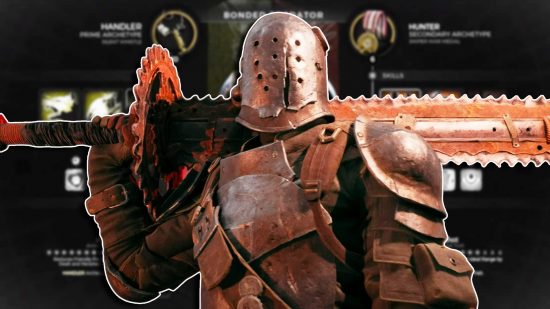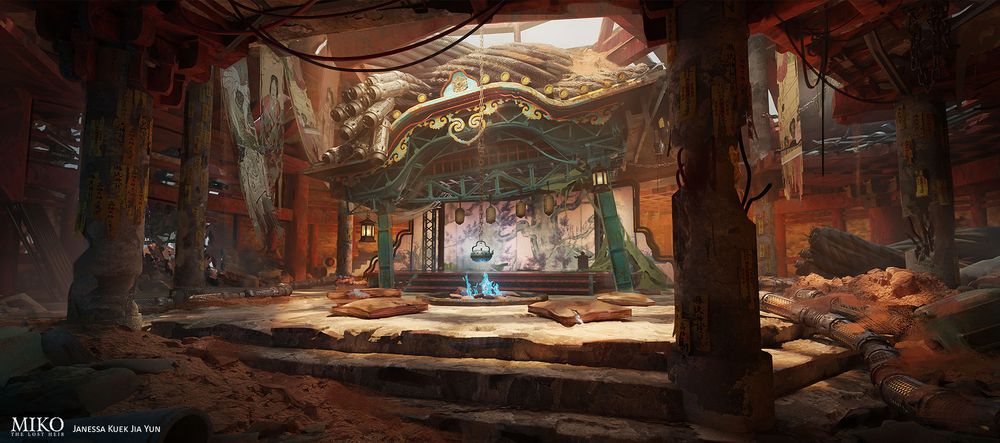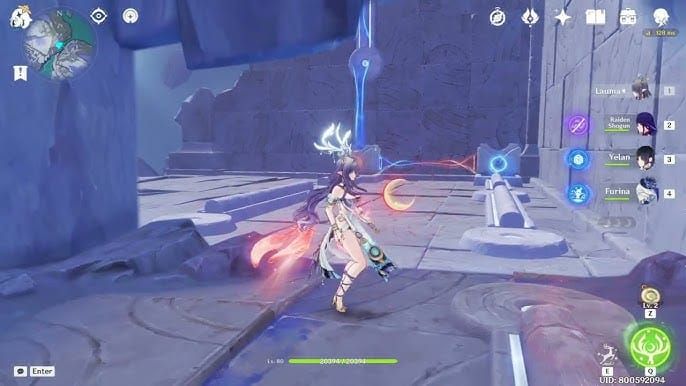Baldur's Gate 3 Review: D&D Evolved, or Dicey Proposition?

Baldur's Gate 3 (BG3) has arrived, and expectations are astronomical. As a seasoned PC gamer with decades of experience delving into digital worlds, I approach this RPG behemoth with a healthy dose of skepticism and a thirst for adventure. Does Larian Studios' latest creation truly capture the magic of Dungeons & Dragons 5th Edition, or is it another example of ambition exceeding execution? This Baldur's Gate 3 review dives deep into its gameplay, narrative, graphics, and PC performance to determine if it's a must-play for CRPG enthusiasts and newcomers alike.
Gameplay & Mechanics: Rolling the Dice on D&D 5e
Larian Studios boldly tackles the challenge of translating the complex ruleset of D&D 5e to the PC. For the most part, they succeed admirably. The core mechanics – advantage, disadvantage, action economy, spell slots – are all present and accounted for. The implementation of the dice roll mechanic in both combat and dialogue creates suspenseful and unpredictable moments, enhancing the role-playing experience. The character creation screen is incredibly detailed, offering a staggering array of customization options. Multiclassing is seamlessly integrated. Consider a Paladin/Warlock multiclass character, a potent combination. The "Smite" spells of the Paladin, normally limited, are refueled by the Warlock's Eldritch Blast. This creates devastating burst damage potential, allowing you to nova down priority targets with satisfying efficiency.
However, the randomness inherent in dice rolls can sometimes lead to frustrating outcomes. Missing a 95% chance attack roll feels like a punch to the gut, especially in crucial moments. While such occurrences are statistically inevitable, they can disrupt the flow of combat and detract from the overall experience. Does Baldur's Gate 3 accurately represent D&D 5e? Mostly yes, although sometimes the game's interpretations can be a little loose compared to a tabletop rules as written environment.
UI/UX: A Step Up from Divinity: Original Sin 2?
Compared to Divinity: Original Sin 2, Baldur's Gate 3's UI is a noticeable improvement, but it still has its quirks. The character creation process is far more intuitive, with clear explanations of races, classes, and backgrounds. Inventory management, however, can become cumbersome, especially when dealing with a large number of scrolls and potions. The radial menu helps, but scrolling through dozens of items during a frantic battle is less than ideal.

Combat: Tactical Depth vs. Dice Roll Fury
The combat system in Baldur's Gate 3 is deeply tactical, offering a wealth of options for strategic players. Full cover grants +4 AC, and high ground confers advantage, just as in tabletop D&D. This is similar to XCOM 2's tactical depth, but BG3 doesn’t quite reach those heights. Target selection is generally easy, although occasionally clicking on the intended enemy can be fiddly in crowded environments. Interrupt effectiveness depends heavily on initiative and positioning, rewarding careful planning.
Compared to the real-time with pause system of Pillars of Eternity 2: Deadfire, Baldur's Gate 3's turn-based approach provides more control and allows for deeper strategic thinking. However, the lack of a proper "undo" button can be frustrating, as misclicks can have dire consequences.
Narrative: Choices That Matter?
Baldur's Gate 3 shines in its branching narrative paths and player agency. The choices you make have significant consequences, shaping the world and the destinies of its inhabitants.
Imagine this: You arrive at a conflict between the Goblins and the Druids. Do you side with the savage Goblins, potentially gaining access to powerful weapons and allies, but at the cost of innocent lives? Or do you defend the Druids, upholding justice and protecting the natural world, but risking the wrath of a formidable enemy? The weight of such decisions is palpable, and the consequences ripple throughout the game.
Companions: A Motley Crew of Potential Allies (and Lovers)
The companion characters – Astarion, Shadowheart, Gale, and Lae'zel – are well-developed and compelling. Their backstories are intriguing, and their personal quests offer unique insights into their motivations and desires. How does Baldur's Gate 3 character development compared to Mass Effect 2? While not quite as iconic as Mass Effect 2's squadmates, BG3's companions are more complex and nuanced than many of the supporting characters found in other RPGs.
 Your choices have a tangible impact on the companions' destinies. Sparing or killing certain characters alters the overall campaign experience, unlocking new quests and influencing the companions' attitudes towards you. The narrative handles mature themes – violence, sexuality, moral ambiguity – with surprising nuance, avoiding gratuitousness while still exploring complex and challenging issues.
Your choices have a tangible impact on the companions' destinies. Sparing or killing certain characters alters the overall campaign experience, unlocking new quests and influencing the companions' attitudes towards you. The narrative handles mature themes – violence, sexuality, moral ambiguity – with surprising nuance, avoiding gratuitousness while still exploring complex and challenging issues.
Graphics: A Visual Feast (Most of the Time)
Baldur's Gate 3 is a visually stunning game, showcasing impressive environmental detail and character models. Exploring the Underdark is a particular highlight, with the bioluminescent fungi casting an eerie green glow on the surrounding rocks and the menacing creatures lurking in the shadows.
 Character animations are generally smooth and fluid, although occasional clipping issues can detract from the immersion. A Rogue's sneak attack, executed with a flourish of daggers, is a sight to behold. A Mage casting Fireball erupts in a glorious explosion of light and color, dynamically illuminating nearby enemies.
Character animations are generally smooth and fluid, although occasional clipping issues can detract from the immersion. A Rogue's sneak attack, executed with a flourish of daggers, is a sight to behold. A Mage casting Fireball erupts in a glorious explosion of light and color, dynamically illuminating nearby enemies.
The environmental detail and art style are comparable to that of The Witcher 3: Wild Hunt, although BG3 lacks the same level of handcrafted polish. The density of foliage in forested areas is impressive, but some textures appear blurry upon close inspection. The architecture of cities like Baldur's Gate is grand and imposing, capturing the essence of a bustling medieval metropolis. The spell effects, such as "Hold Person" and "Mass Cure Wounds", are visually impressive and impactful, adding to the sense of power and spectacle.

The game's visual style maintains a cohesive look while adapting the lore of the Forgotten Realms, creating a world that feels both familiar and fresh.
PC Performance: A Tale of Two Cities (and One Lower City)
Baldur's Gate 3's performance on PC is a mixed bag, especially in Act 3, in the Lower City. While the game runs smoothly in less densely populated areas, the Lower City is notorious for its performance issues, even on high-end hardware. The game's performance dips substantially here and can be frustrating. The game's performance depends a lot on your hardware, and can be a problem if you don't have enough power.
Here’s a look at expected performance based on our testing:
| Hardware | Resolution | Settings | Avg FPS | 1% Low | CPU Usage | DLSS/FSR | Avg FPS (+DLSS/FSR) |
|---|---|---|---|---|---|---|---|
| RTX 3060 (12GB) | 1080p | High (Shadows: Medium) | 55 | 35 | 75% | Off | N/A |
| RTX 3060 (12GB) | 1080p | High (Shadows: Medium) | 70 | 45 | 75% | On | 70 |
| RTX 3070 (8GB) | 1440p | Ultra (Vol. Fog: Med) | 60 | 40 | 80% | Off | N/A |
| RTX 3070 (8GB) | 1440p | Ultra (Vol. Fog: Med) | 80 | 50 | 80% | On | 80 |
| RX 6700 XT (12GB) | 4K | Ultra | 45 | 30 | 90% | Off | N/A |
| RX 6700 XT (12GB) | 4K | Ultra | 55 | 35 | 90% | On | 55 |
 As the chart above shows, the game is heavily reliant on CPU performance, especially in densely populated areas like the Lower City. Reducing shadow quality, lighting effects, and model detail can improve performance without significantly impacting visual quality. DLSS or FSR is implemented, and it works reasonably well in improving performance at 1440p and 4K resolutions. Enabling DLSS/FSR introduces some minor visual artifacts, such as slightly blurred textures, but the performance gains are generally worth the trade-off.
As the chart above shows, the game is heavily reliant on CPU performance, especially in densely populated areas like the Lower City. Reducing shadow quality, lighting effects, and model detail can improve performance without significantly impacting visual quality. DLSS or FSR is implemented, and it works reasonably well in improving performance at 1440p and 4K resolutions. Enabling DLSS/FSR introduces some minor visual artifacts, such as slightly blurred textures, but the performance gains are generally worth the trade-off.
The game's RAM usage is also substantial, requiring at least 16GB of system memory for a smooth experience. VRAM usage can exceed 8GB at higher resolutions and settings, so graphics cards with less VRAM may struggle.
Overall Experience: A CRPG for the Ages?
Baldur's Gate 3 offers a lengthy and replayable experience, clocking in at approximately 80-100 hours for a single playthrough. The different classes, alignments, and narrative choices provide ample incentive for multiple playthroughs. Is Baldur's Gate 3 accessible to newcomers to the CRPG genre? Yes, although some may find the sheer number of options overwhelming at first. The game offers enough guidance without sacrificing complexity, making it a good entry point for those new to the genre.
 Compared to Disco Elysium, Baldur's Gate 3 offers a more open-ended and action-oriented experience. While Disco Elysium focuses heavily on narrative depth and character development, BG3 emphasizes tactical combat and player agency.
Compared to Disco Elysium, Baldur's Gate 3 offers a more open-ended and action-oriented experience. While Disco Elysium focuses heavily on narrative depth and character development, BG3 emphasizes tactical combat and player agency.
Baldur's Gate 3 successfully blends the classic CRPG formula with modern design sensibilities, capturing the spirit of Dungeons & Dragons while offering a polished and accessible experience. How well does it capture the spirit of Dungeons & Dragons? Very well, including collaborative storytelling and unpredictable outcomes.
Is Baldur's Gate 3 a must-play for PC gamers? Absolutely. Its strengths – compelling narrative, deep tactical combat, stunning graphics – outweigh its weaknesses – occasional performance issues, UI quirks. Its innovation lies in its faithful adaptation of D&D 5e and its commitment to player choice. It has had a massive impact on the genre and has set a new bar for CRPGs.
Final Score: 9.2/10
Baldur's Gate 3 is a triumph of game design, a love letter to Dungeons & Dragons, and a must-play for any PC gamer who appreciates deep, engaging, and replayable RPGs. Despite some technical hiccups, it's an experience that will stay with you long after the credits roll. Whether you're a seasoned veteran of the Forgotten Realms or a newcomer to the world of CRPGs, Baldur's Gate 3 is an adventure worth embarking on.